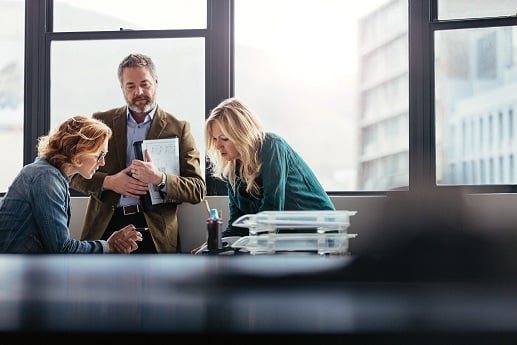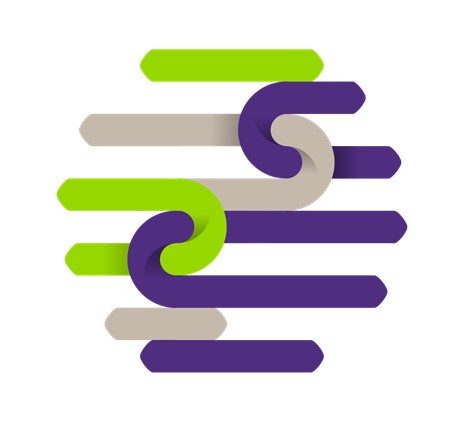-
Internal audit
In today's increasingly competitive and regulated market place, organisations - both public and private - must demonstrate that they have adequate controls and safeguards in place. The availability of qualified internal audit resources is a common challenge for many organisations.
-
IFRS
At Grant Thornton, our International Financial Reporting Standards (IFRS) advisers can help you navigate the complexity of financial reporting so you can focus your time and effort on running your business.
-
Audit quality monitoring
Having a robust process of quality control is one of the most effective ways to guarantee we deliver high-quality services to our clients.
-
Global audit technology
We apply our global audit methodology through an integrated set of software tools known as the Voyager suite.
-
Looking for permanent staff
Grant Thornton's executive recruitment is the real executive search and headhunting firms in Thailand.
-
Looking for interim executives
Interim executives are fixed-term-contract employees. Grant Thornton's specialist Executive Recruitment team can help you meet your interim executive needs
-
Looking for permanent or interim job
You may be in another job already but are willing to consider a career move should the right position at the right company become available. Or you may not be working at the moment and would like to hear from us when a relevant job comes up.
-
Practice areas
We provide retained recruitment services to multinational, Thai and Japanese organisations that are looking to fill management positions and senior level roles in Thailand.
-
Submit your resume
Executive recruitment portal
-
Update your resume
Executive recruitment portal
-
Available positions
Available positions for executive recruitment portal
-
General intelligence assessments
The Applied Reasoning Test (ART) is a general intelligence assessment that enables you to assess the level of verbal, numerical reasoning and problem solving capabilities of job candidates in a reliable and job-related manner.
-
Candidate background checks
We provide background checks and employee screening services to help our clients keep their organisation safe and profitable by protecting against the numerous pitfalls caused by unqualified, unethical, dangerous or criminal employees.

-
Capital markets
If you’re buying or selling financial securities, you want corporate finance specialists experienced in international capital markets on your side.
-
Corporate simplification
Corporate simplification
-
Expert witness
Expert witness
-
Family office services
Family office services
-
Financial models
Financial models
-
Forensic Advisory
Investigations
-
Independent business review
Does your company need a health check? Grant Thornton’s expert team can help you get to the heart of your issues to drive sustainable growth.
-
Mergers & acquisitions
Mergers & acquisitions
-
Operational advisory
Grant Thornton’s operational advisory specialists can help you realise your full potential for growth.
-
Raising finance
Raising finance
-
Restructuring & Reorganisation
Grant Thornton can help with financial restructuring and turnaround projects, including managing stakeholders and developing platforms for growth.
-
Risk management
Risk management
-
Transaction advisory
Transaction advisory
-
Valuations
Valuations
-
Human Capital Consulting
From time to time, companies find themselves looking for temporary accounting resources. Often this is because of staff leaving, pressures at month-end and quarter-end, or specific short-term projects the company is undertaking.
-
Strategy & Business Model
Strategy & Business Model
-
Process Optimisation & Finance Transformation
Process Optimisation & Finance Transformation
-
System & Technology
System & Technology
-
Digital Transformation
Digital Transformation
-
International tax
With experts working in more than 130 countries, Grant Thornton can help you navigate complex tax laws across multiple jurisdictions.
-
Licensing and incentives application services
Licensing and incentives application services
-
Transfer pricing
If your company operates in more than one country, transfer pricing affects you. Grant Thornton’s experts can help you manage this complex and critical area.
-
Global mobility services
Employing foreign people in Australia, or sending Australian people offshore, both add complexity to your tax obligations and benefits – and we can guide you through them.
-
Tax compliance and tax due diligence review services
Tax compliance
-
Value-Added Tax
Value-Added Tax
-
Customs and Trade
Customs and Trade
-
Service Line
グラントソントン・タイランド サービスライン
-
Business Process Outsourcing
Companies, large and small, need to focus on core activities. Still, non-core activities are important, and they need to be leaner and more efficient than most companies can make them sustainably. For Grant Thornton, your non-core activities are our core business. Grant Thornton’s experienced outsourcing team helps companies ensure resilience, improve performance, manage costs, and enhance agility in resourcing and skills. Who better to do this than an organisation with 73,000 accountants? At Grant Thornton we recognise that that outsourcing your F&A functions is a strategic decision and an extension of your brand. This means we take your business as seriously as we take our own.
-
Technology and Robotics
We provide practical digital transformation solutions anchored in business issues and opportunities. Our approach is not from technology but from business. We are particularly adept at assessing and implementing fast and iterative digital interventions which can drive high value in low complex environments. Using digital solutions, we help clients create new business value, drive efficiencies in existing processes and prepare for strategic events like mergers. We implement solutions to refresh value and create sustainable change. Our solutions help clients drive better and more insightful decisions through analytics, automate processes and make the most of artificial intelligence and machine learning. Wherever possible we will leverage your existing technologies as our interest is in solving your business problems – not in selling you more software and hardware.
-
Technical Accounting Solutions
The finance function is an essential part of the organisation and chief financial officer (CFO) being the leader has the responsibility to ensure financial discipline, compliance, and internal controls. As the finance function is critical in every phase of a company’s growth, the CFO role also demands attention in defining business strategy, mitigating risks, and mentoring the leadership. We offer technical accounting services to finance leaders to help them navigate complex financial and regulatory environments, such as financial reporting and accounting standards, managing compliance requirements, and event-based accounting such as dissolutions, mergers and acquisitions.
-
Accounting Services
Whether you are a local Thai company or a multinational company with a branch or head office in Thailand you are obliged to keep accounts and arrange for a qualified bookkeeper to keep and prepare accounts in accordance with accounting standards. This can be time consuming and even a little dauting making sure you conform with all the regulatory requirements in Thailand and using Thai language. We offer you complete peace of mind by looking after all your statutory accounting requirements. You will have a single point of contact to work with in our team who will be responsible for your accounts – no matter small or large. We also have one of the largest teams of Xero Certified Advisors in Thailand ensuring your accounts are maintained in a cloud-based system that you have access to too.
-
Staff Augmentation
We offer Staff Augmentation services where our staff, under the direction and supervision of the company’s officers, perform accounting and accounting-related work.
-
Payroll Services
More and more companies are beginning to realize the benefits of outsourcing their noncore activities, and the first to be outsourced is usually the payroll function. Payroll is easy to carve out from the rest of the business since it is usually independent of the other activities or functions within the Accounting Department. At Grant Thornton employees can gain access to their salary information and statutory filings through a specialised App on their phone. This cuts down dramatically on requests to HR for information by the employees and increases employee satisfaction. We also have an optional leave approval app too if required.
-
 IBR Optimism of Thailand Mid-Market Leaders Suggests Potential Underestimation of Challenges Ahead: International Business Report, Q1 2024Bangkok, Thailand, April 2024 — The Grant Thornton International Business Report (IBR) for Q1 2024 unveils a strikingly optimistic outlook among Thailand's mid-market business leaders, juxtaposed with the looming challenges that will shape the nation's economic future. With a Business Health Index score of 13.5, Thailand outperforms its ASEAN, Asia-Pacific, and global counterparts, signaling a robust confidence that may overshadow critical issues such as demographic changes, skills shortages, and the necessity for digital advancement.
IBR Optimism of Thailand Mid-Market Leaders Suggests Potential Underestimation of Challenges Ahead: International Business Report, Q1 2024Bangkok, Thailand, April 2024 — The Grant Thornton International Business Report (IBR) for Q1 2024 unveils a strikingly optimistic outlook among Thailand's mid-market business leaders, juxtaposed with the looming challenges that will shape the nation's economic future. With a Business Health Index score of 13.5, Thailand outperforms its ASEAN, Asia-Pacific, and global counterparts, signaling a robust confidence that may overshadow critical issues such as demographic changes, skills shortages, and the necessity for digital advancement. -
 Workshop Corporate Strategy and Company Health Check WorkshopThroughout this workshop, we will delve into the life cycle of companies, examining the stages of growth, maturity, and adaptation. Our focus will extend to the current business environment, where your Company stands today, and how our evolving strategy aligns with the ever-changing market dynamics.
Workshop Corporate Strategy and Company Health Check WorkshopThroughout this workshop, we will delve into the life cycle of companies, examining the stages of growth, maturity, and adaptation. Our focus will extend to the current business environment, where your Company stands today, and how our evolving strategy aligns with the ever-changing market dynamics. -
 Tax and Legal update 1/2024 Introducing the New “Easy E-Receipt” Tax scheme with up to THB 50,000 in Tax DeductionsThe Revenue Department has introduced the latest tax scheme, the “Easy E-Receipt”, formerly known as “Shop Dee Mee Kuen”. This scheme is designed to offer individuals tax deductions in 2024.
Tax and Legal update 1/2024 Introducing the New “Easy E-Receipt” Tax scheme with up to THB 50,000 in Tax DeductionsThe Revenue Department has introduced the latest tax scheme, the “Easy E-Receipt”, formerly known as “Shop Dee Mee Kuen”. This scheme is designed to offer individuals tax deductions in 2024. -
 TAX AND LEGAL Complying with the PDPA – A Balancing ActOrganisations must be aware of the circumstances in which they are allowed to collect data to comply with Thailand’s Personal Data Protection Act.
TAX AND LEGAL Complying with the PDPA – A Balancing ActOrganisations must be aware of the circumstances in which they are allowed to collect data to comply with Thailand’s Personal Data Protection Act.
Automating and optimising your supply chain can help save money and facilitate growth. So could it work for your business?
It’s a rare organisation that wouldn’t want to increase its control over quality, price, delivery and responsiveness through supply chain optimisation (SCO) – yet few are taking the necessary steps to achieve it.
Other well-established benefits include the potential to reduce capital expenditure and inventory while increasing production. But what is SCO and how can it offer a pathway to growth? William Hickey, former Chairman and CEO of Bubble Wrap and Jiffy bag-maker Sealed Air Corporation, sums up what it means to him: “It’s a supply chain that is an effective, efficient, controlled process, from customer order through material procurement, production, transportation and delivery to the customer. In addition, the time it takes employees to hand over tasks between shifts is minimised, feedback is in real time, wait times are reduced and process data and times are monitored digitally.”
Hickey, who is a senior advisor to Grant Thornton in the US, has not only implemented successful SCO at his former company, but also has years of experience in overseeing supply chain improvements at acquired companies. His view is that organisations tend to look at each area of their business as a discrete function instead of multiple parts of one seamless, continuous process. In doing so, they often concentrate on the front end of the business: the customer, product development, sales and marketing. This means they could be missing a real opportunity.
As Ward Melhuish, advisory manufacturing leader at Grant Thornton US, explains, it’s a board-level issue rather than something for the procurement department: “If you’re looking at SCO end to end, then it’s a business strategy, not just a supply chain strategy.”
One company that has invested in SCO and is reaping the rewards is Syn Strand, a family-owned US manufacturer with 60 employees. It has improved its existing IT software with the help of scheduling algorithms and now works much more closely with its sister companies. The impact on its bottom line has been particularly impressive, with multi-million-dollar savings. (See panel below, ‘The results of SCO: sales, savings and reduced inventory.’)
Don’t underestimate the size of the opportunity
So why aren’t more companies embracing SCO? Research by Grant Thornton in the US found more than a third (36%) of the 375 manufacturing executives it surveyed are yet to formulate such a strategy[i]. A separate international study across all sectors suggests even more entities globally have yet to embrace SCO (44%)[ii].
Hickey explains: “A lot of companies don’t understand it or appreciate the size of the opportunity. It takes a visionary somewhere in management to make the decision to say: ‘We’re going to rethink our supply chain and do it better.’”
The process is vital, because while some companies are contemplating their first step, competitors are striding ahead with the realisation they can benefit from shorter cycle times and lower working capital, which means they save money, are more efficient and can focus on quality.
What’s holding organisations back?
Directors surveyed for Grant Thornton’s International Business Report reported several obstacles to increasing automation along their supply chains. Concern about the financial impact was the main factor, followed by implementation complexity.
Regional and industry differences also emerged. While cultural aversion to providing increased transparency between suppliers was generally low, the Asia Pacific region was the most culturally averse to this. In industry terms, agriculture and tourism were the two sectors that had the most concerns regarding the implementation complexity of increased automation. The oil, gas, mining and quarrying industries focused more on cost.
Grant Thornton’s US report,The future of growth and the manufacturing industry: disrupting products, production and supply, generated more detail. For example, supply chain complexity and inefficiencies were cited as blockers (44%), but so were growing regulatory, tax and political uncertainty (41%); the sheer effort required to manage defensive priorities, such as compliance (37%); inability to source digital talent and skills (33%); and concern about ability to manage the tax implications of key growth strategies, such as acquisitions (19%). Inability to find funding sources was a further issue for 15% of respondents.
The report – which draws on the responses of C-suite professionals from various sectors, including food and beverage, automotive, metals and chemicals – warns that the gap between the leaders and other businesses will grow as technology widens the performance gap and makes it more difficult to catch up.
How do you master SCO?
Research company Gartner ranks the world’s top 25 supply chains[iii] and its latest study says the top companies are particularly focused on three key things. First, they are creating digital connections across and within their supply chain operations such as combining Internet of Things sensors, cloud computing and advanced analytics. Next, they are using modular supply chains (where component parts are subdivided into modules that are easily replaced or interchanged). And third, they recognise that their own company’s health depends on the health and success of suppliers, partners, employees and customers – so they listen to and support their needs.
But it’s not only a concern for the likes of Amazon, Apple and Cisco. UK SME Aspect has hired a data analyst to give the property maintenance company a competitive advantage. Managing Director Will Davies told the Daily Telegraph[iv] that the move has helped the company anticipate demand better: “When it rains, we get more roofing calls, and when it's cold we get more boiler calls. Severe weather is generally good for our business. If we can see a cold snap is coming and web traffic is increasing, we might need to hire 10 more engineers, and every engineer requires a certain amount of ‘stuff’ and it all impacts on our supply chain.”
What are the crucial success factors?
For those just getting started, Melhuish says a company’s approach to supply chain optimisation will depend on the nature of the challenge. “Any enterprise should consider what the problem is that they’re trying to solve,” he says. “Is it a market issue, are they losing bids, is it reliability, margin shrinkage, lead times or access to information?
“Think about differentiation and critical success factors. They will then lead you to the actions you need to take and the technological investments you’ll need to make. You have to have the outcome in mind first and then apply the right solution.”
Hickey suggests organisations avoid trying to tackle everything in one hit and recommends training to support employees. “Having been a CEO I wouldn’t want to put an organisation through lots of change at once. It’s a multi-year process and works better when people are part of it, particularly when you’re used to dealing with standardised and long established processes.”
The prize on offer is clear, but failing to act is not an option long term. The Grant Thornton US report offers a stark warning: “If a company does not want to be stranded on the wrong side of that chasm, it must initiate farsighted, strategic and profound change.”
Could SCO benefit your business?
To find out more about how to set a supply chain optimisation strategy, please contact us.
The results of SCO: sales, savings and reduced inventory
Within the US, there have been efforts to help make manufacturers more competitive. After a successful pilot project in five states, the National Institute of Standards and Technology’s Hollings Manufacturing Extension Partnership (MEP) launched a new supply chain optimisation programme in 2014[v]. The programme employed a model where there was a coaching and mentoring partnership between MEP’s subject matter experts and participating manufacturers to address barriers to effective supply chains.
One company involved in the pilot was Syn Strand. Established in 1987, it specialises in the manufacture of monofilament products, which it supplies to its parent company Voith Paper Fabric & Roll Systems.
Syn Strand had been making efforts to reduce inventory and increase production speed. But the MEP approach revealed the key to improving profitability was actually better communication with its sister and parent companies and the integration of new planning and scheduling software.
The results? The institute reports that Syn Strand avoided $3 million in capital expenditure as a result of the optimisation programme, achieved $2 million in increased annual sales, saved $200,000 a year and retained eight full-time jobs. This was all while achieving a 10% increase in capacity and a 10% reduction in inventory.
Operations manager Bart Burford said: “The company is now able to maintain disciplined inventory control and institute management changes more quickly. We manage the entire system much more efficiently.”
References
[i] https://www.grantthornton.com/~/media/content-page-files/campaigns/growth/pdfs/2017/Future-Growth-Manufacturing-report We surveyed more than 375 US executives. Respondents were C-suite and senior director level from a range of manufacturing sectors, including food and beverage, industrial machinery, automotive, steel and metals, and chemicals.
[ii] The Grant Thornton International Business Report (IBR), launched in 1992, provides insight into the views and expectations of more than 10,000 businesses per year across 37 economies.
[iii] http://www.gartner.com/technology/supply-chain/top25.jsp



